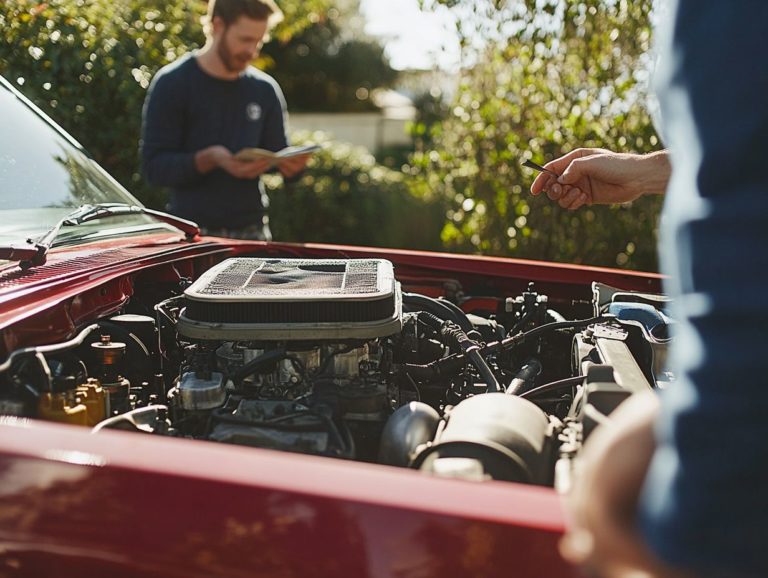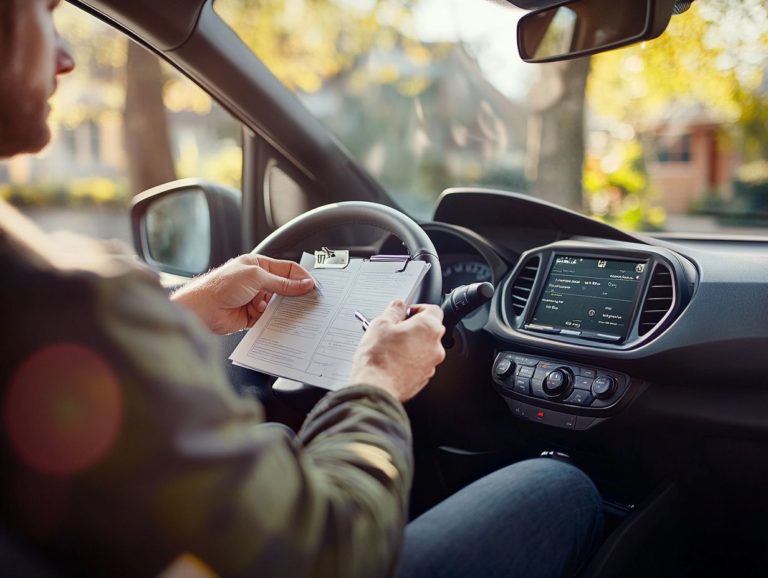How to Evaluate a Car’s Paint Condition
When it comes to cars, the condition of the paint is often an overlooked detail that can significantly influence both value and aesthetics.
Whether you’re in the market to buy, sell, or simply maintain your vehicle, having a solid understanding of how to assess its paint can truly make a difference.
From spotting scratches and chips to evaluating fading, knowing what to look for is essential. Get ready to discover effective tools to inspect your car’s paint!
This guide will equip you with tools and techniques for inspection, highlight factors that affect paint condition, and share methods to enhance and maintain your car’s exterior.
Prepare to elevate your approach to car care!
Contents
- Key Takeaways:
- Why Paint Condition Matters
- Assessing the Paint’s Appearance
- Tools and Techniques for Evaluation
- Factors That Affect Paint Condition
- Improving and Maintaining Paint Condition
- Frequently Asked Questions
- What are some signs of a car’s paint condition that should be evaluated?
- How can I assess the depth of scratches on a car’s paint?
- What is the best way to check for paint chips on a car?
- Why is it important to evaluate a car’s paint condition before purchasing?
- Can I fix minor paint imperfections on my own?
- What should I look for when evaluating a car’s paint for fading or discoloration?
Key Takeaways:
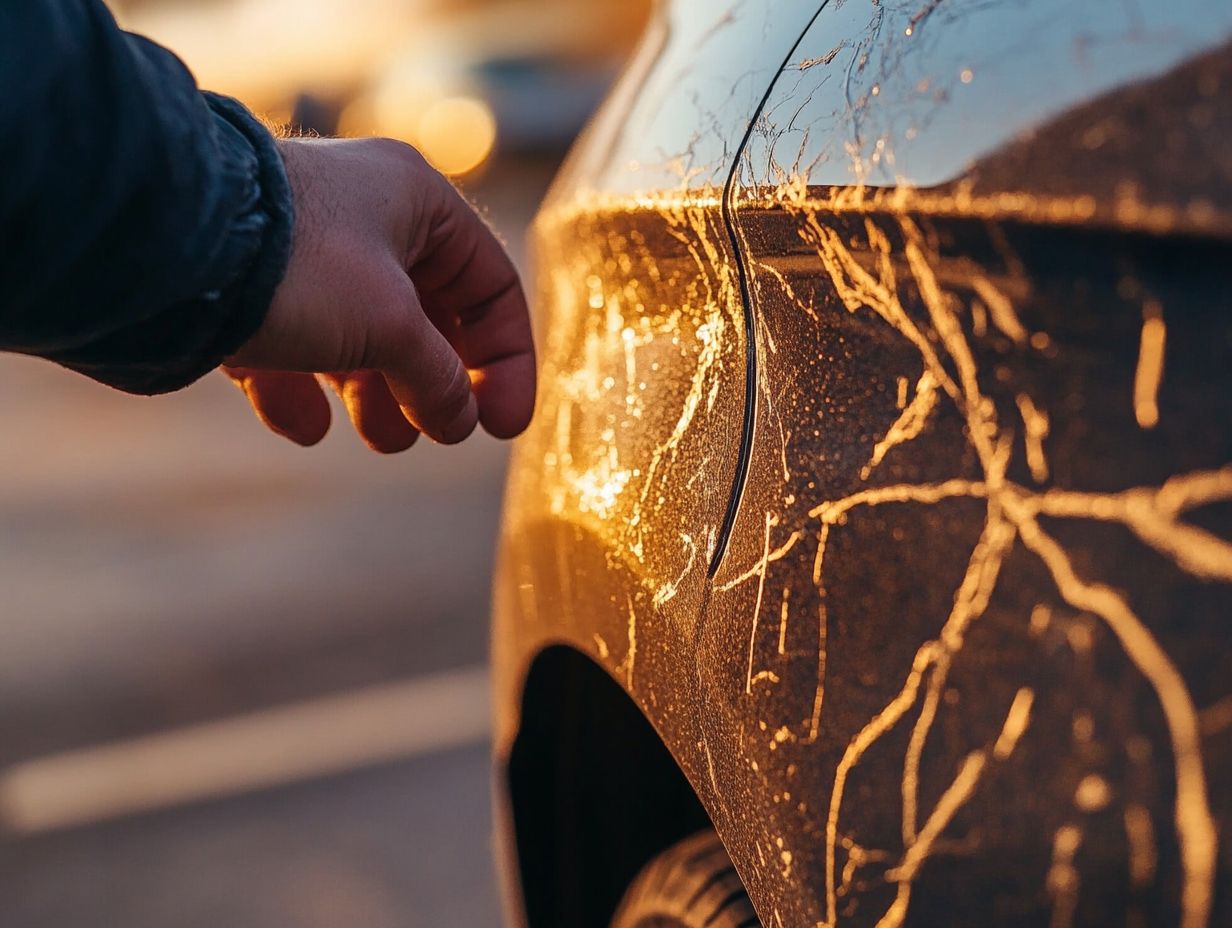
- Regularly evaluating a car’s paint condition is crucial for both its value and overall appearance.
- Simple tools like a flashlight can help you spot scratches and chips.
- A car’s age, environment, and maintenance habits greatly affect its paint condition, but thorough cleaning or repainting can help improve and maintain it.
Why Paint Condition Matters
The condition of your vehicle’s paint is vital for both its aesthetic appeal and overall value. Car owners in Melbourne should focus on the quality of their paintwork.
A well-maintained finish not only elevates your car’s visual impact but also shields it from the elements and potential defects over time.
By ensuring the durability of the coatings and investing in services like repainting when needed, you can greatly extend the life of your car s aesthetics and keep it looking brand new for years to come.
Impact on Value and Aesthetics
The aesthetic appeal of a vehicle plays a crucial role in its market value, as potential buyers are often drawn in by the quality of the paint and overall finish.
When you approach a car, the first impression is typically shaped by its exterior condition. Minor imperfections can sow seeds of doubt about how well the vehicle has been cared for. It s essential to closely inspect the paint quality, searching for scratches, chips, or fading that may suggest neglect.
Regular upkeep not only enhances your car s appearance but also helps maintain its resale value; a well-kept vehicle signals reliability.
Beyond the paintwork, aspects like interior cleanliness and the functionality of components are vital. Any visible signs of wear can significantly reduce the vehicle’s appeal and, consequently, its selling price.
Assessing the Paint’s Appearance
Evaluating the paint’s appearance is essential for preserving your vehicle s aesthetics and ensuring its long-term durability. Various imperfections can emerge over time.
By paying close attention to the finish, you can proactively address any issues and maintain that showroom shine for years to come.
Scratches, Chips, and Fading
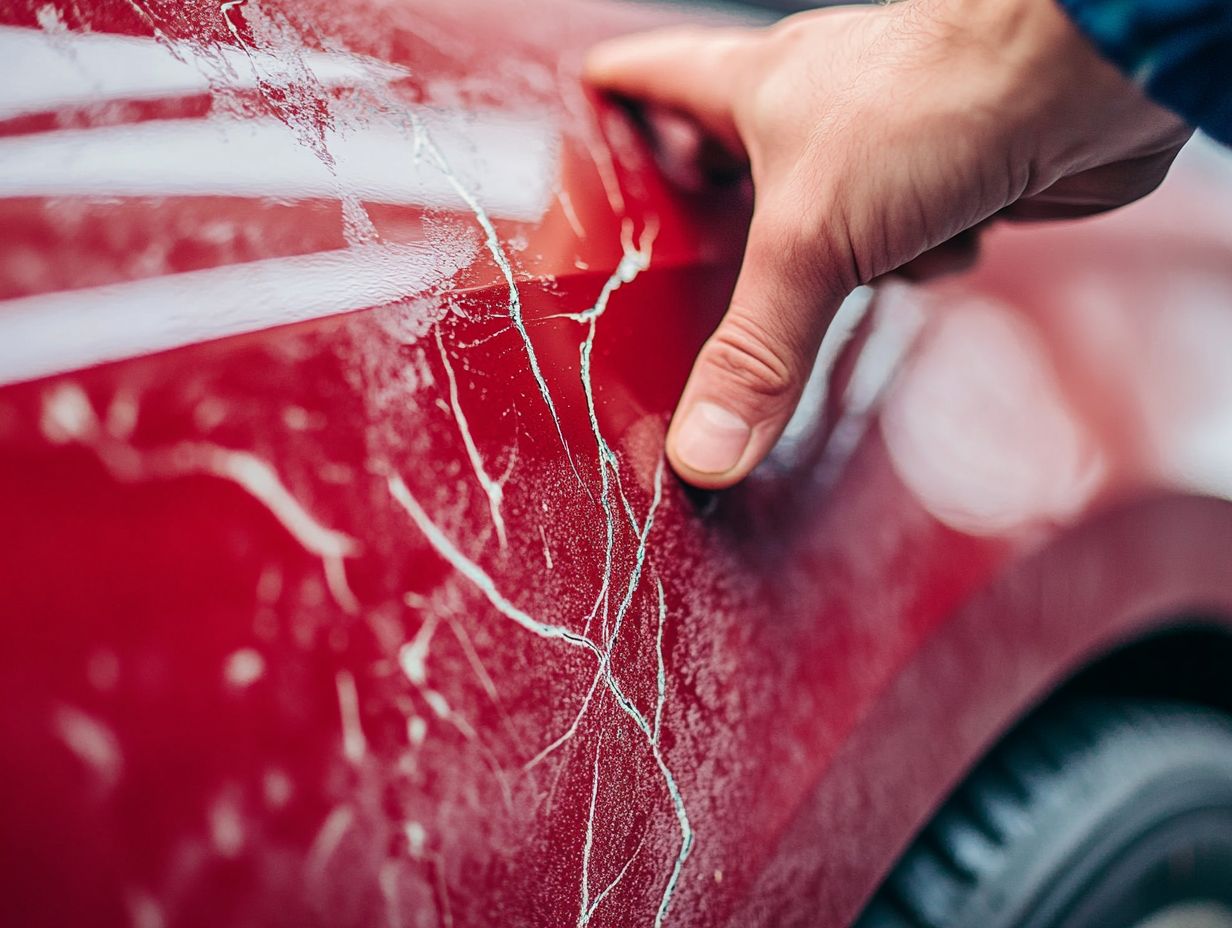
Common issues like scratches, chips, and fading can significantly detract from your vehicle’s overall appearance, underscoring the importance of regular maintenance and timely corrections.
These imperfections often arise from everyday wear and tear, exposure to harsh environmental elements, or the occasional minor accident. Neglecting the paint job can diminish your car s aesthetics and lead to rust and further damage, ultimately affecting its long-term value.
For those who take pride in their vehicles, understanding the nature of these defects is essential. DIY methods, like using scratch removers or touch-up paint, can effectively address minor issues, while professional services like thorough cleaning or repainting are better suited for larger challenges.
No matter which approach you choose, tackling these problems promptly ensures your vehicle retains its charm and functionality.
Don t let minor imperfections ruin your vehicle’s charm act early to preserve its beauty!
Tools and Techniques for Evaluation
Utilizing the appropriate tools and techniques to assess your vehicle’s paint enhances your understanding of its condition and any required maintenance. This approach ensures quality and boosts durability, allowing your vehicle to maintain its appeal and integrity over the years.
Inspecting with a Flashlight
Use a flashlight to catch those tricky flaws in your vehicle’s paint. This method can reveal subtle defects and imperfections that might otherwise escape your notice, allowing for a comprehensive evaluation of the paint’s condition.
Shine the light from various angles and distances to uncover flaws like scratches, chips, or fading. A strong light enhances the visibility of surface irregularities. When inspecting, hold the flashlight at a low angle, directing the light parallel to the painted surface; this technique magnifies imperfections beautifully.
Ensure that the environment is moderately dark. This backdrop allows the flashlight’s illumination to stand out, spotlighting areas that may require your attention.
Using a Paint Thickness Gauge
A paint thickness gauge is an essential tool for evaluating your vehicle’s paintwork. It offers precise measurements to determine whether the paint has been applied correctly or if certain areas may need attention.
By measuring the thickness of the paint layers, you can see if the finish aligns with manufacturer specifications. A reading within the standard range often between 4 to 6 mils for most vehicles signals a healthy coat, suggesting the paint is likely in good shape. Readings that are too low might indicate insufficient coverage, while excessively high levels could point to potential issues such as repainting or the use of body filler, a material used to repair dents.
Accurately interpreting these readings gives you the power to tackle paint imperfections proactively, ultimately enhancing the longevity of your vehicle and preserving its aesthetic appeal.
Factors That Affect Paint Condition
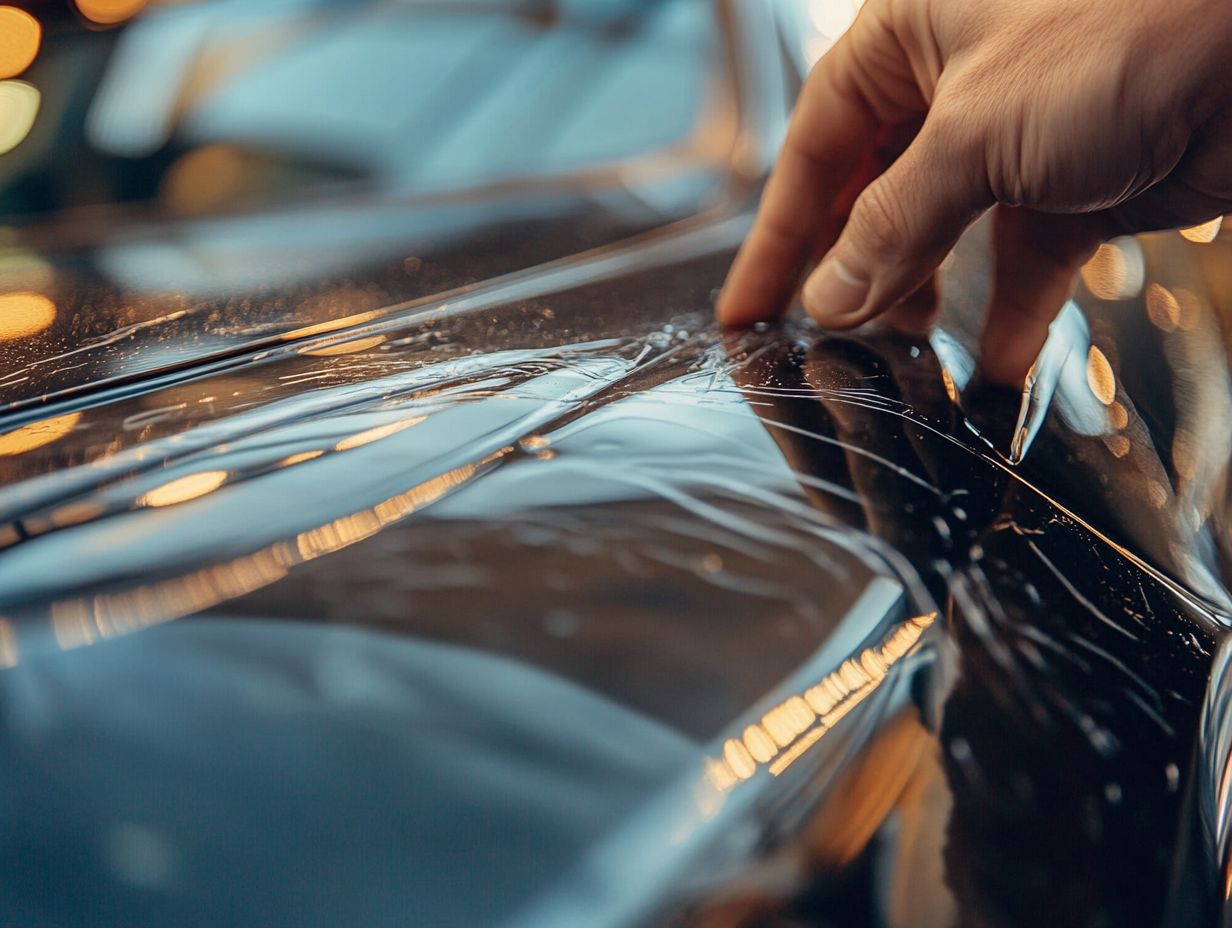
The condition of your vehicle’s paint is influenced by several factors, including its age, the environmental conditions it faces, and the level of maintenance you provide over time.
Each of these elements plays a crucial role in determining the quality and durability of the paint, ultimately affecting the overall appearance of your vehicle.
Age, Environment, and Maintenance
The age, environment, and maintenance practices surrounding your vehicle are crucial in determining its paint condition. Neglecting any of these factors can lead to significant deterioration.
Consider the elements your car faces daily. Exposure to harsh sunlight, extreme temperatures, and environmental pollutants can accelerate the degradation of its exterior. For instance, relentless UV rays can cause fading and oxidation, while chemicals like road salt and bird droppings can erode the clear coat, leading to more serious issues down the line.
If you re not cleaning and waxing regularly, you re allowing imperfections to fester, worsening over time. That s why regular maintenance like routine washes and applying protective sealants is essential. This proactive approach helps combat the elements and preserve the paint’s integrity, keeping that stunning shine looking fresh for years!
Improving and Maintaining Paint Condition
Enhancing and preserving your vehicle’s paint condition is entirely within your reach. By blending effective DIY techniques with the expertise of professional services, you can ensure your car maintains its aesthetic allure and retains its value over the years.
Don t wait! Start evaluating your vehicle’s paint today for a lasting impression!
DIY Methods and Professional Services
Using DIY methods and professional services can greatly improve your vehicle’s paint condition. This ensures great quality and looks.
If you’re someone who enjoys doing things themselves, explore polishing techniques. You can use fine-grit compounds to buff minor surface imperfections and make your paint shine.
Applying wax or sealants protects your vehicle from environmental damage. Professional services offer ceramic coatings that help keep your car’s paint looking new for a longer time.
DIY methods are easier on the wallet but may need more frequent upkeep. Professional applications might cost more upfront but deliver longer-lasting results.
Understanding the benefits of each method empowers you. This helps you make informed decisions, ensuring a smart investment in your vehicle’s longevity.
Frequently Asked Questions
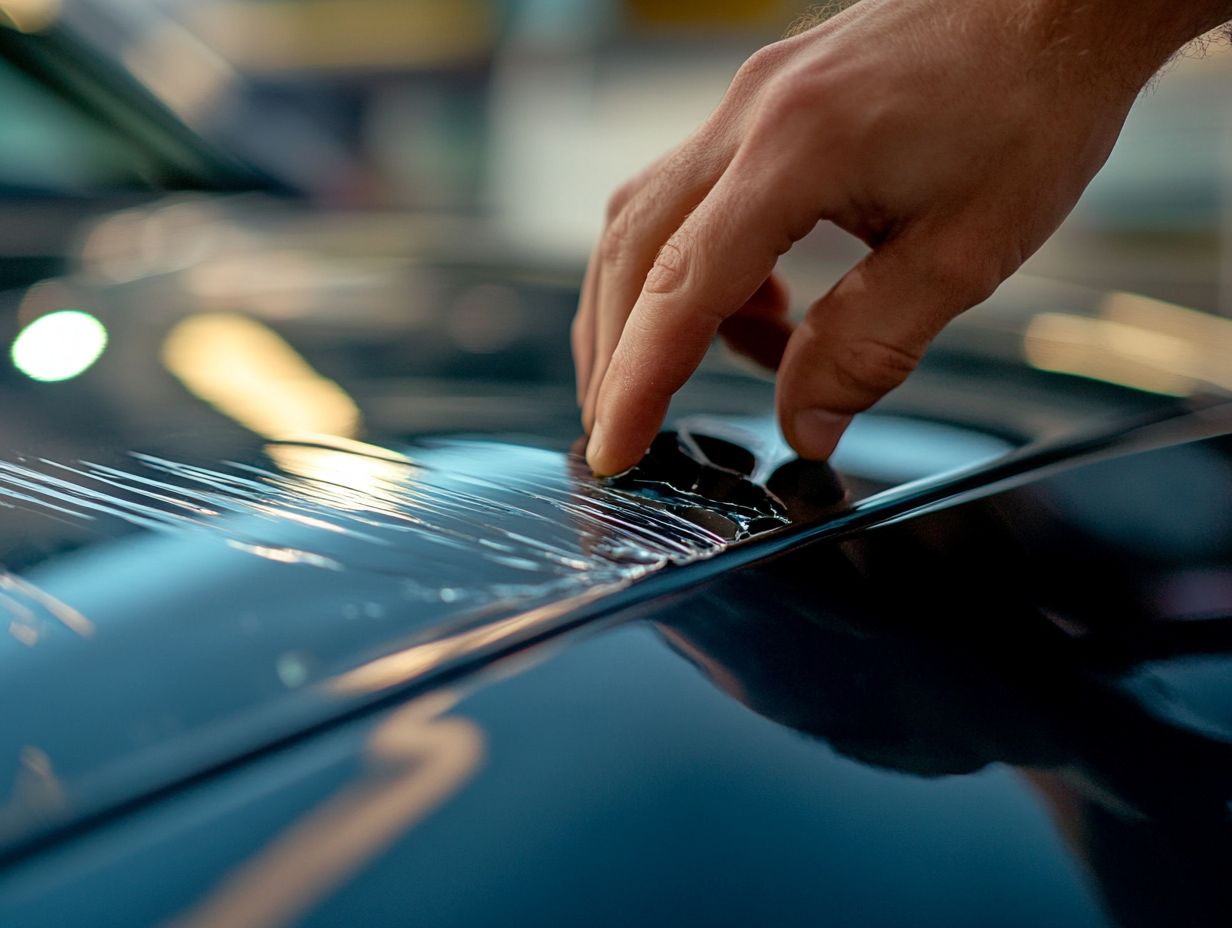
What are some signs of a car’s paint condition that should be evaluated?
Some signs to look for include scratches, chips, fading, bubbling, and uneven color or shine.
How can I assess the depth of scratches on a car’s paint?
To assess the depth of scratches, you can run your fingernail over the scratch. If it catches, it is likely a deeper scratch that may require professional repair.
What is the best way to check for paint chips on a car?
One way to check for paint chips is to lightly run your hand over the surface of the car, feeling for any rough or raised spots that indicate a chip in the paint.
Why is it important to evaluate a car’s paint condition before purchasing?
Evaluating a car’s paint condition can give you insight into the overall care and maintenance of the vehicle. To learn more about this process, check out our guide on how to evaluate a used car’s condition, as it can also affect its value and potential future maintenance costs.
Can I fix minor paint imperfections on my own?
Minor imperfections such as small scratches or chips can often be fixed with touch-up paint or DIY kits. However, for more significant damage, it is best to seek professional help.
What should I look for when evaluating a car’s paint for fading or discoloration?
Signs of fading or discoloration may include a difference in color between panels or a dull or chalky appearance to the paint. Check for any mismatched areas where the car may have been repainted.


